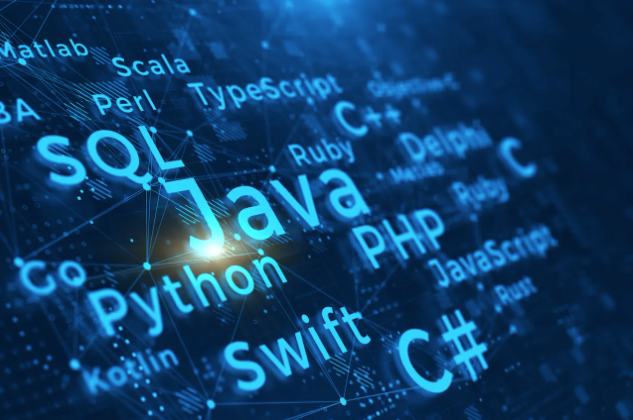Programming languages are the building blocks of software development, enabling developers to create complex and innovative applications. Whether you’re a seasoned programmer or a curious beginner, learning the ins and outs of programming languages can unlock a world of opportunity. In this journey, you’ll discover the various types of programming languages, their features, and applications. From C++ and Java to Python and JavaScript, each language has its own unique quirks and capabilities.
– Programming languages are constantly evolving, with new features and improvements being added regularly. Staying up-to-date with the latest trends and technologies is essential for any programmer.
– Different programming languages are well-suited for different types of applications. For example, JavaScript is often used for web development, while Python is popular for data analysis and machine learning.
– The syntax of programming languages can vary greatly, ranging from the concise and minimalist style of Python to the more verbose and structured syntax of Java. The choice of programming language often depends on personal preference and the project requirements.
– Programming languages can have different levels of abstraction, which refers to the level of complexity of the language. Low-level languages, such as Assembly, are closer to machine code and are more complex to write, while high-level languages, such as Python, are easier to read and write, but may sacrifice some control over the underlying hardware.
– Many programming languages have large communities of developers who contribute to open-source libraries and frameworks. These communities are a valuable resource for learning, problem-solving, and collaboration.
– The popularity of programming languages can change over time, and it’s important to stay aware of industry trends to make informed decisions about which languages to learn and use.
– Some languages, like Haskell and Lisp, are based on mathematical concepts and are often used for academic research and theoretical computer science.
– Some languages, like Erlang and Elixir, are designed for building highly concurrent and fault-tolerant systems, making them well-suited for high-traffic and mission-critical applications.
– Programming languages can be “statically typed” or “dynamically typed,” which refers to how they handle the declaration and validation of data types. Statically typed languages check types at compile time, while dynamically typed languages check types at runtime.
– Some programming languages are domain-specific, which means they’re designed for a specific purpose or industry, such as R for statistical analysis or SQL for database management.
– Some programming languages have strong typing systems, where types are strictly enforced and any mismatched types will result in a compile-time error. Other languages have weak typing systems, where types are loosely enforced and implicit type conversions are allowed.
– Some programming languages have powerful metaprogramming capabilities, which allow for writing code that writes code. For example, in Ruby, you can use the “eval” function to evaluate a string of code at runtime.
Here are some concepts in programming languages
Inheritance: Inheritance allows one class to inherit the properties and behaviors of another class. This is useful for creating hierarchical relationships between classes and reducing code duplication.
Exception handling: Exception handling involves catching and handling errors that occur during program execution. This helps maintain the integrity of the program and prevent unexpected behavior.
Functional programming: Functional programming focuses on creating small, self-contained functions that can be easily composed and reused. It emphasizes the use of mathematical functions to transform data, rather than manipulating state.
Recursion: Recursion involves a function calling itself, creating a loop that can repeat until a certain condition is met. This can be useful for solving problems that involve repeated patterns or hierarchical structures.
Immutability: Immutable data cannot be modified, making it more reliable and predictable than mutable data. Functional programming languages often emphasize immutability to promote code stability and reliability.
Metaprogramming: Metaprogramming involves writing code that writes or manipulates other code. This can be used to generate code automatically, or to create domain-specific languages that are tailored to specific problem domains.
Reflection: Reflection enables a program to inspect and modify its own structure and behavior at runtime. This can be useful for debugging, testing, and dynamic programming.
Concurrency: Concurrency involves multiple processes or threads executing simultaneously, allowing a program to perform multiple tasks in parallel. This can improve program performance and responsiveness.
Functional Reactive Programming (FRP): FRP is a programming paradigm that combines the benefits of functional programming with real-time event handling. It allows for efficient and declarative handling of events, enabling responsive and reactive applications.
Lazy evaluation: Lazy evaluation is a technique that delays the evaluation of an expression until its value is actually needed. This can improve performance and memory usage by avoiding unnecessary computations.
Parallelism: Parallelism involves running multiple processes simultaneously, either on separate cores or separate machines. This can significantly increase the performance of computationally intensive tasks.
Distributed programming: Distributed programming involves building applications that run on multiple computers, communicating and collaborating over a network. This allows for scaling and fault tolerance in large-scale applications.
Asynchronous programming: Asynchronous programming involves executing tasks in the background, without blocking the main program’s execution. This allows the main program to continue running, improving responsiveness and scalability.
Event-driven programming: Event-driven programming revolves around reacting to events, such as user input or system notifications. This enables applications to respond to events in real-time and create interactive user experiences.
Dynamic programming: Dynamic programming involves solving complex problems by breaking them down into smaller, overlapping subproblems and storing the solutions in a table or cache. This technique can help reduce computational complexity and improve efficiency.
Type theory: Type theory is a branch of mathematics that studies the properties of types and their relationships. In programming, types are used to specify the structure and behavior of data, and can help catch errors at compile time.
Aspect-oriented programming: Aspect-oriented programming is a technique for modularizing cross-cutting concerns, such as logging or security, in a program. It allows developers to separate concerns and improve modularity.
Generative programming: Generative programming involves using code generation techniques to automatically create new code based on templates or specifications. This can help reduce boilerplate code and improve code reuse.
Domain-specific languages (DSLs): DSLs are languages designed to be used in a specific domain or problem area. They can be more expressive and easier to understand than general-purpose languages, and can help domain experts write code more easily.
Natural language processing (NLP): NLP is the study of how computers can understand and process human language. This is important for applications like chatbots, voice assistants, and sentiment analysis.
Quantum computing: Quantum computing is a relatively new field that explores how quantum mechanics can be used to create more powerful computers. This could lead to breakthroughs in areas like machine learning and cryptography.
Probabilistic programming: Probabilistic programming involves using probability theory and machine learning to build models that can reason about uncertain or incomplete information. This is useful in domains like robotics, finance, and weather forecasting.
AutoML (Automated Machine Learning): AutoML involves using algorithms to automatically optimize and configure machine learning models, without requiring as much human intervention. This can make machine learning more accessible and scalable.
Declarative programming: Declarative programming involves describing what a program should do, rather than how it should do it. This can lead to more elegant, concise, and reusable code. Examples of declarative programming languages include SQL and Prolog.
Low-code and no-code development: Low-code and no-code development platforms allow non-technical users to build applications using visual interfaces and drag-and-drop tools, rather than writing code. This can speed up development and make it more accessible to non-programmers.
Conclusion–
As a leading provider of the Python certification course in Mohali, Coimbatore, Faridabad, Jabalpur and other parts of India we are thrilled to share the many benefits of taking our course. With our comprehensive curriculum and hands-on training, our course is the best way to learn the fundamentals of Python programming and become a skilled programmer. Here are some reasons why you should choose our course:
Learn from experienced instructors who are experts in the field.
Get hands-on experience with real-world projects.
Receive a certification that will make you stand out in the job market.
Build a strong foundation in Python that will allow you to tackle complex programming challenges.
Network with other like-minded individuals and build a community of support.
Here are some reasons why we are saying that we provide the best python certification course in Mohali:
Flexible schedule: Our courses are offered at various times and formats, so you can choose a schedule that works for you.
Job placement assistance: We offer job placement assistance to help you land your dream job as a Python programmer.
Comprehensive course content: Our course covers all the essential topics of Python, from basic concepts to advanced techniques, ensuring that you receive a well-rounded education.
Affordable pricing: Our course is competitively priced, making it accessible to a wide range of learners.
Join our course and take the first step towards becoming a skilled Python programmer.











